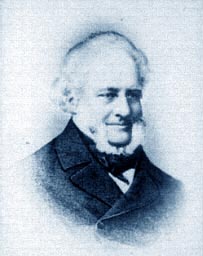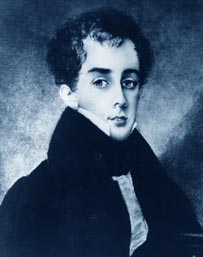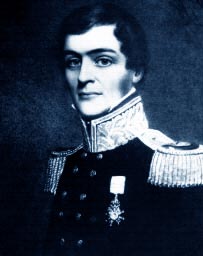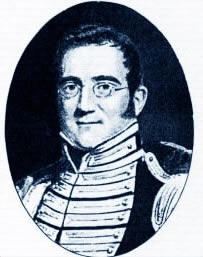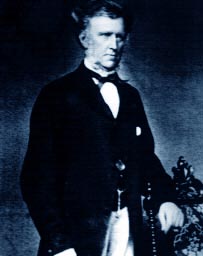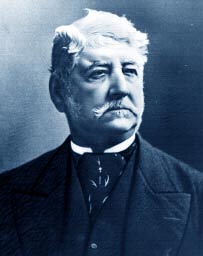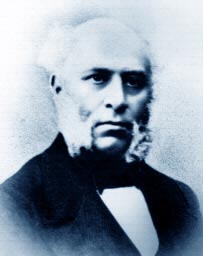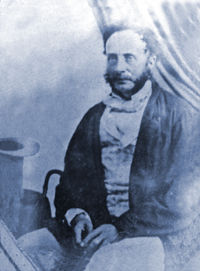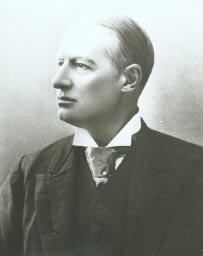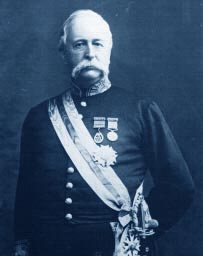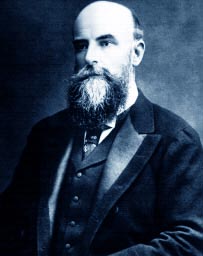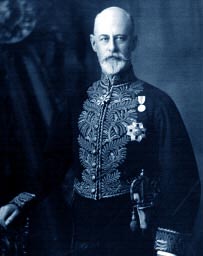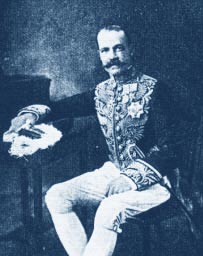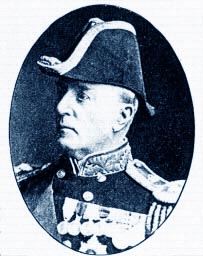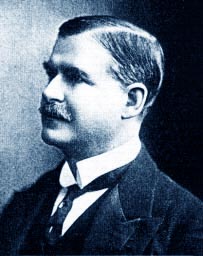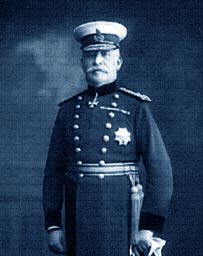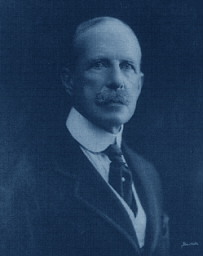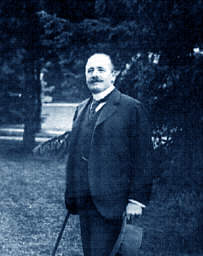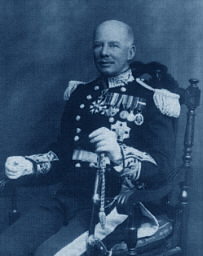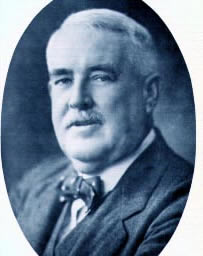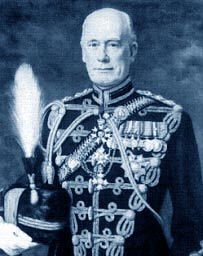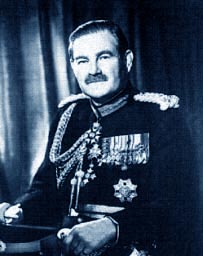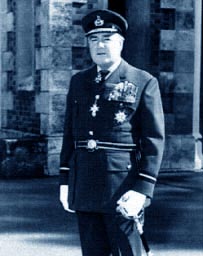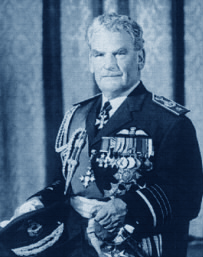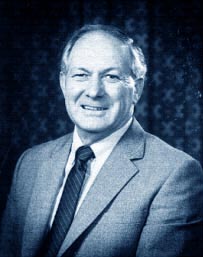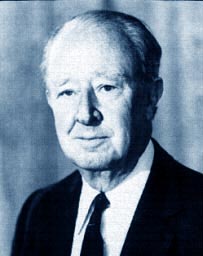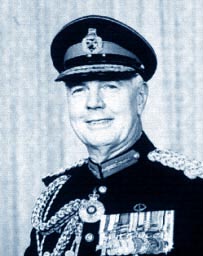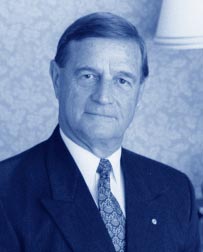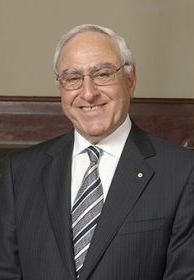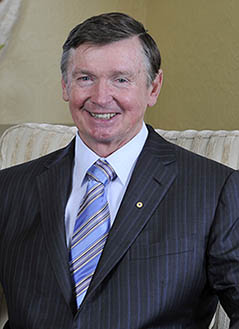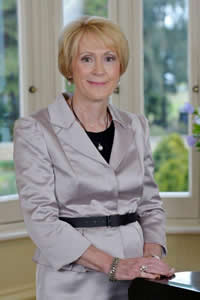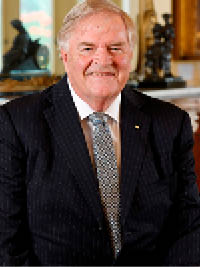Find out about each of our Governors, from our first Governor Captain James Stirling to our current Governor Kim Beazley.
Captain James Stirling
Show moreSir James Stirling was the first Governor of WA. He was born in 1791 in Lanarkshire, Scotland, and came from a family well-known and celebrated in the naval history of the 18th century.
Sir James followed in his grandfather's footsteps to join the Navy in 1803 as a first class volunteer on a store ship called the Camel. During the next nine years, he joined a series of ships that fought in action. In 1812, he was involved in the American War and cruised off the mouth of the Mississippi, damaging the commerce of the American gulf ports and making the coast very insecure for the enemy.
Such was his reputation by this stage that he was then sent to protect the Hudson Bay settlements that had been menaced by the Americans. This involved sailing from the Tropics to the Arctic circle.
In 1823, he married Ellen Mangles, the daughter of James Mangles of Woodbridge, Guildford, the High Sheriff for Surrey.
He was appointed to the ship Success and sent to form a settlement in Raffles Bay in the Torres Strait, a job that earned him high praise from the Governor of New South Wales. While in command of the ship he visited WA and made a report on the Swan River.
In October 1828, nine months after he relinquished command of the Success, he was sent to form a settlement in WA and became the colony's first Governor until 1839.
According to writings from the time, he was enthusiastic and worked hard in the role. He was finally rewarded with a knighthood that the colonists supported, writing that Stirling had "been highly and deservedly popular" and was "...a friend of warm sympathy with individual distress, and an entire and liberal promoter of every good and liberal institution..."
In later years, he was criticised for not always acting in the best interests of the colony, accused of being elitist and arrogant in the use of his powers.
He resigned as Governor in 1839 due to the threat of war with France. It was considered desirable for all officers of the Royal Navy to return to the active list if war loomed. He commanded a series of ships from 1840 to 1850 and then became Commander-in-Chief in China and the East Indies until 1856. He was appointed an Admiral in 1862. Three years later he died.
John Hutt
Show moreJohn Hutt took over from Sir James Stirling as Governor. He had been the Governor of North Arcott in the Madras Presidency and came from a family famed for its colonisation efforts.
Details about John Hutt's life are scanty but it has been said that he held strong views about colonisation and he was often in conflict with the settlers of the WA colony.
At the time he became Governor, Western Australia was not a very popular place and it is claimed that Hutt ruled in such a way that he "saved the infant settlement from utter disaster, even though eventually he may have erred on the side of over-caution". In fact, Hutt is attributed with keeping up the settlement's moral and living standards in contrast to "...the decay that had afflicted similar communities".
He was apparently gifted with "the truest spirit of liberality and tolerance" and welcomed all "fair criticism of his policy, and the undeviating candour of his opponents gave him no offence".
A liberal in politics, he sought to liberalise the system of government that had been put in place by Stirling. To that end, his efforts earned him the colonists' respect.
He decided to resign his commission as Governor early. According to a writer in the local newspaper of the day, The Swan River News, Hutt had been a good Governor, one who displayed "such a combination of judicious firmness and candour".
The writer expressed regret at his leaving, saying Hutt "never abandoned principle to obtain an ephemeral popularity...We sincerely wish to see the talent, developed and matured on so limited a stage, made available in a wider and more important sphere of action."
Lieutenant-Colonel Andrew Clarke
Show moreJohn Hutt handed over the office of Governor to Lieut-Col Andrew Clarke in January 1846. Clarke, an Irishman, was a distinguished soldier and administrator. He was 53 years of age when he assumed the post that gave him the supreme authority under the Crown in WA.
Clarke was in charge of all the troops in Van Diemen Land at 18 years of age and rose to the rank of Lieut-Col in the 46th Regiment of Infantry in Australia. Prior to his appointment in WA he was Governor of St Lucia, one of the West Indian dependencies of the British Crown.
Unfortunately, his strenuous military service took its toll on his health and it is reported that for most of his career as WA Governor he was "almost a confirmed invalid".
However, the colonists were delighted that he was a married man because they anticipated a revival in social functions that had waned under the single Hutt's rule. He also had a proven track record of success in his previous governorship. Their only concern was about Clarke's health, which continued to deteriorate during the year of his appointment.
Clarke is best remembered for making educational facilities available to the "humblest of citizens" for the first time in the colony. It is also said that his attention was engaged about the "treatment and moral uplifting" of the local Aboriginal people.
Clarke died just a year after his appointment, his popularity reflected in the proclamation at the time: "The high moral zeal and religious principles of the deceased gave promise of the fullest blessings of a just and paternal administration".
Lieutenant-Colonel Frederick Chidley Irwin: Administrator
Show moreLieutenant-Colonel Irwin came to the Swan River colony aboard HMS Sulphur, a ship he commanded that carried a detachment of the 63rd Regiment for the protection of the settlement. He was the Colony's Administrator for one year in from 1847-1848.
Irwin was in charge of the small military post and he saw himself as playing an important role. His own interest in the venture can be seen in the first allotment of the townsites in the infant city of Perth - his name appears on top of the list!
He became, by virtue of his position as officer commanding the troops, senior member and vice chairman of the Legislative Council appointed by Governor Stirling in January 1831. He also had been called upon, in the early days of the colony, to exercise the functions of chief ruler, and he also acted for a year as Administrator in 1847 to 1848, between Governors Lt-Col Andrew Clarke and Captain Charles Fitzgerald.
It is said that he did much for the well being of the settlement, being part of all the "movements that had for their object the moral and spiritual welfare of the colony".
He was apparently "stern and uncompromising in regard to all matters of morality" but "merciful and just in all his pronouncements".
Irwin was relieved from the post in 1848 by Captain Charles Fitzgerald.
Captain Charles Fitzgerald
Show moreCaptain Fitzgerald was a Captain in the Royal Navy, the son of a country gentleman of the old Irish school. Before his appointment as Governor of WA he had been Governor of the Gambia Settlements in West Africa.
The new Governor was reputedly a "typical sailor, bluff, kind-hearted, and generous". However, there were those in the colony that were worried he may not have the necessary ability to run the settlement.
At the time, the colony was under severe pressure of being abandoned as a desolate land. Governor Fitzgerald wrote of his concerns and suggestions for relief to the Secretary of State.
Meanwhile at home, the settlers battled to keep the colony afloat. Finally, with Fitzgerald's support, it was decided to make WA a penal settlement. At the time there were varying opinions as to the wisdom of the measure, but it did bring benefits for the time being.
Fitzgerald took the action due to the "desperate condition of the country in 1848-9" and "certain stern remedies were needed to save the infant settlement from ruin". The Governor, assisted by Captain Henderson, the Comptroller of Convicts, used the system to develop the country by opening communication throughout the colony and encouraging settlement of the interior.
Fitzgerald, though, was not well liked. His nautical career had fostered an autocratic style and he did not suffer criticism kindly. However, his administration advanced political matters and saw the setting up of institutions for the welfare and education of people.
He laid the foundation stone for a Mechanics' Institute in Fremantle in 1851 and in the same year proclaimed the Imperial Act to set up the Legislative Council. The following year he laid the foundation stone of the Swan River Mechanics' Institute.
Governor Fitzgerald was a keen explorer. It is recorded that he was speared, but not fatally, in 1848 at Northampton by an Aboriginal person while leader of an expedition.
He died in 1887 in his 96th year.
Sir Arthur Edward Kennedy
Show moreSir Arthur was the third Irishman in a row to be appointed Governor of WA. He was a retired infantry officer who attained the rank of Captain before becoming the County Inspector of the Board of Works and later Relief Inspector during the Irish famine.
His first appointment in the Colonial Service was the office of Governor of the Gambia Settlements, which had previously been held by Captain Fitzgerald, the former Governor of WA.
In 1854, he was appointed Consul-General of Sherborough County and then a year later WA's Governor.
Sir Arthur reputedly had a commanding presence and an autocratic manner that made him very unpopular with the settlers. He also found the bureaucracy difficult which meant "many of his acts bore the impress of autocracy". He was a skilled orator and apparently had "charming manners" but these qualities did not endow him to the majority. In fact, it is said that he was overwhelmed by what he considered his position and that "his excess of dignity" militated against his success.
Had he been allowed to follow his views a land tax would have been implemented in WA to help overcome, what he viewed with alarm as, the alienation of large blocks of land so early in the history of the colony. He also was a great admirer of the educational system known as the Irish National and this brought him into serious conflict with the Roman Catholic priesthood.
At the time, the colony was flourishing with big sums of Imperial money being spent under the convict system. But Captain Kennedy had the view that the government was his own and as his despotism grew, so did public anger against him. In fact, in August 1856, the colony's citizens held a public meeting in Perth to protest against his Excellency's arbitrary methods.
Governor Kennedy relinquished the reins of office in 1862 and claimed much of the colony's success on his legislative efforts. He was appointed Governor of Vancouver Island by the Home Office and then of Sierre Leone where he also was Commissioner for the abolition of the slave trade. In 1872, he became Governor of Hong Kong, then five years later Governor of Queensland.
He resigned that position in 1883 and died while returning to England in the same year.
John Stephen Hampton
Show moreJohn Hampton's appointment as Governor was surrounded with controversy.
His knowledge of Colonial administration was restricted to the convict system after his first appointment in Australia as the surgeon superintendent of the convict ship Constant that arrived in Van Diemen Land in 1843. He was appointed Comptroller of Convicts but was later censured for having derived profit from the labours of the prisoners.After much legal wrangling, where the local legislature tried to have him appear before Parliament on a charge of contempt, Hampton was rescued by Governor Sir Henry Young who prorogued the Legislative Council and the warrant for his appearance lapsed.
Hampton went to Sydney and then on to England where the Court of Appeals upheld a decision of the Tasmanian Courts in his favour. The decision obviously pleased the Colonial Office because shortly after he was appointed Governor of WA in 1862.
Hampton came to WA and began opening up the settlement by means of convict labour, but he soon landed himself in trouble with his dictatorial style. It is reported that Hampton was "somewhat tyrannical and harsh, and partook more of the methods of the 'white overseer' of the slave plantation". Public indignation, though, compelled better treatment of the convicts than they were receiving under his harsh rule, and that of his son who had been appointed Comptroller-General. However, Hampton's public works policy did result in benefits to the settlement and he also gave special attention to the colonisation of the North West, with the extension of the pearl fisheries adding new wealth to the colony. Interestingly, as the colony's development progressed, it fostered the desire of settlers for more political rights and the agitation that, years later, ended in responsible government now took definite form.
During his term, he and his wife spent their holidays at Rottnest Island and for this purpose Governor Hampton ordered the building of a government residence using convict labour. Earlier, on the couple's arrival to WA, Hampton had also changed plans for the construction of Government House to include a bigger dining room and ballroom. Costs spiralled from the original estimates of seven thousand pounds to 15 thousand pounds. He also came under fire for extravagantly furnishing the house, including the purchase of several very large gilt mirrors, which are still in the house today. Another cause of criticism was the Governor's appointment of his son, George, to roles in the colony for which he was not qualified.
In 1868, Hampton resigned from the post and left Western Australia. The transportation of convicts was later totally suspended. He died in 1869.
Sir Benjamin Chilley Campbell Pine
Show moreSir Benjamin Pine has an odd claim to fame. He was the Governor who never took up office.
He was appointed under Letters Patent dated 30 July 1868 and became WA's eighth Governor despite never arriving, nor taking the Oath of Office.
Sir Benjamin was appointed to take over from Governor Hampton but just as he was chosen another vacancy occurred for the Governor of Antigua, in the West Indies, and the English authorities decided he should fill that instead.
Governor Pine was a career officer of the Colonial Service. Before his WA appointment, he had already served 27 years in the colonies - successively in West Africa, Natal and then the West Indies. He had earned himself a good reputation in these postings.
It was thought that his appointment to WA would prove attractive at the time because his predecessor Governor Hampton had paved the way in many aspects of the colony's development, including progress in public works and internal communications. Hampton also had made the public service more efficient.
It was expected that Sir Benjamin would take the colony forward from Hampton's achievements and concentrate on economic development now that the transportation of convicts had ceased. But his talents were not to be tested, and the job fell to Frederick Weld.
A combination of circumstances meant that nearly six months passed before news from England arrived in the colony that Pine would not be coming.
It was then nearly a year after Hampton's departure from Fremantle, in late 1868, before Weld arrived in Perth in mid-1869 to take up residence at Government House.
Sir Frederick Aloysius Weld
Show moreFrederick Weld had a distinguished career in politics in New Zealand before becoming WA's Governor. After completing his studies, he decided to embark on a colonial career and emigrated from England to New Zealand where he became a pastoralist and explorer.
Weld took an active part in the development of representative government in his adoptive country. In the first elected Parliament, he won a seat in the House of Representatives and finally became Premier in 1864. Weld took over during a difficult time as war had broken out between the settlers and the local indigenous people and the colony was severely economically depressed.
Weld decided the best attack was to use small groups of colonial militia to push the Maoris into interior lands. It is reported that on the defeat of the Waikato people, he confiscated their lands to indicate his displeasure with them.
He brought the war to an end - at the expense of the Maoris' land rights - and earned himself much praise from the colonists for restoring the country's credit. However, his government was defeated one year after he became Premier, and so he decided to return to England.
On his return, "his fame had preceded him" and he was offered the WA Governor's position, which he accepted in 1869. Weld arrived in WA and immediately set about trying to reform the system of government to reflect a system with ministerial responsibility.
However, his first attempts were thwarted as Britain did not want the colony to have full democratic rule at the time.
Weld also introduced electric telegraph to the colony to improve communications and also passed the Education Act, which reputedly was met with wide support. He also put in place a system whereby all religious denominations (but this did not include Aboriginal people) had equality in land grants, which he made on a proportionate basis to their numbers.
He was concerned that there was little information on WA's interior and to rectify the situation he appointed John Forrest (later Sir John) as exploration leader.
In 1874, he resigned his post to become Tasmanian Governor where he remained until 1880. He was then knighted and appointed Governor of the Straits Settlement, a position he held until 1887.
He died in 1891, leaving six sons and seven daughters. It was said that he was a man of "ability, culture, straightforward and chivalrous both as a Minister and a Governor, but sometimes autocratic and wanting in tact". Some considered him one of the best administrators of his time.
Sir William Cleaver Francis Robinson
Show moreSir William Robinson had been Governor of the Falkland Islands and Prince Edward Island (part of the Dominion of Canada) before his appointment to WA in 1874.
During his administration of King Edward Island the question of the Canadian Union was debated and he had a great hand in bringing it about in 1873. Ironically though, he was strongly opposed to agitation in WA for responsible government, something his predecessor, Sir Frederick Weld, had supported.
His first term as Governor was marked at the time by his moves to restrain the political aspirations of the people and it is said that as a consequence his administration became "merely routine". He relinquished the position in 1877 to follow in the footsteps of Weld and take on the appointment of Governor of the Straits Settlement. In the same year he was knighted.
The following year he went to Bangkok on a special visit to invest the King of Siam, as he was known then, with the GCMG insignia and was himself invested with the Grand Cross of Siam, which he got permission to wear. In 1880, he again assumed the office of Governor of WA. During his second term it is reported that he left his mark on the colony by wiping out a huge debt of 80,000 pounds and leaving a surplus of 32,000 pounds.
Apparently, the colonists now found him a "sympathetic help in all their political aims" and when, in 1883, he left to assume the office of Governor of South Australia, it was "with feelings of regret that his departure was heralded". He left South Australia in 1889 to act as Governor of Victoria. A year later, Sir William was again appointed Governor of WA for a third term. He went to England where having "in view his remarkable administrative ability and tact, the Home authorities desired to avail themselves of his services and knowledge of Western Australian affairs to preside over the inauguration of responsible government in the colony".
While in London he helped the Colonial Office and delegates from WA in regard to the passing of the Constitutional Bill through the Imperial Parliament. Sir William Robinson saw WA's importance as an Australian colony rise during his terms in office and "he earned the unquestioned thanks of the bulk of inhabitants".
He retired in 1895 after serving 40 years almost wholly in the service of the colonial empire. He died in 1897 in his 63rd year.
Major-General Sir Harry St. George Ord
Show moreMajor-General Sir Harry Ord was destined to follow his father, a Captain in the Royal Artillery, into the military profession.
He entered the Royal Military Academy in 1835 and for the next 20 years carved a distinguished career that culminated in the start of his colonial work in 1855 when he was sent as Special Commissioner to the Gold Coast.
In 1857, he was appointed Lieutenant-Governor of the Island of Dominica in the West Indies and during the next 10 years held positions throughout the colonies until his appointment as Colonial Governor of the Strait Settlements.
The same year he was knighted and two years later promoted to Major-General. Apparently, so successful were his efforts "especially in regard to the diverse Eastern races", that his tenure was extended and he remained in Singapore until 1873.
Following his resignation, Sir Harry went on leave due to ill health that was attributed to his prolonged residence in tropical climates. He remained unemployed for four years until his appointment in 1877 as Governor of WA. But, it is said, that when he took over the office he simply "marked time" to fulfil the requirements necessary to attract the maximum pension when he retired in 1880.
The Cyclopeida of Western Australia records that as "an administrator during this period of history of the colony he might have done good works, but his admittedly high talents were not conspicuous during this period. Having lived for many years in Asiatic lands he displayed a great desire to introduce Asiatics into the colony, a tendency which was smartly checked."
Further, it says, Sir Harry had "not the slightest effect on the destinies of Western Australia".
He spent his remaining years pursuing his interests in zoological science before dying in Homburg in 1885
Sir William Cleaver Francis Robinson
Show moreSir William Robinson had been Governor of the Falkland Islands and Prince Edward Island (part of the Dominion of Canada) before his appointment to WA in 1874.
During his administration of King Edward Island the question of the Canadian Union was debated and he had a great hand in bringing it about in 1873. Ironically though, he was strongly opposed to agitation in WA for responsible government, something his predecessor, Sir Frederick Weld, had supported.
His first term as Governor was marked at the time by his moves to restrain the political aspirations of the people and it is said that as a consequence his administration became "merely routine". He relinquished the position in 1877 to follow in the footsteps of Weld and take on the appointment of Governor of the Straits Settlement. In the same year he was knighted.
The following year he went to Bangkok on a special visit to invest the King of Siam, as he was known then, with the GCMG insignia and was himself invested with the Grand Cross of Siam, which he got permission to wear. In 1880, he again assumed the office of Governor of WA. During his second term it is reported that he left his mark on the colony by wiping out a huge debt of 80,000 pounds and leaving a surplus of 32,000 pounds.
Apparently, the colonists now found him a "sympathetic help in all their political aims" and when, in 1883, he left to assume the office of Governor of South Australia, it was "with feelings of regret that his departure was heralded". He left South Australia in 1889 to act as Governor of Victoria. A year later, Sir William was again appointed Governor of WA for a third term. He went to England where having "in view his remarkable administrative ability and tact, the Home authorities desired to avail themselves of his services and knowledge of Western Australian affairs to preside over the inauguration of responsible government in the colony".
While in London he helped the Colonial Office and delegates from WA in regard to the passing of the Constitutional Bill through the Imperial Parliament. Sir William Robinson saw WA's importance as an Australian colony rise during his terms in office and "he earned the unquestioned thanks of the bulk of inhabitants".
He retired in 1895 after serving 40 years almost wholly in the service of the colonial empire. He died in 1897 in his 63rd year.
Sir Frederick Napier Broome
Show moreSir Frederick Broome's six years in office were tumultuous with continuous clashes with senior officials despite the fact that he personally supported calls for self-government for WA.
His name is familiar throughout Australia because the popular tourist town of Broome in WA's north west is named after him. Sir Frederick was born in Canada and from an early age had a hankering to pursue possibilities within the colonial empire. At 15, he went to New Zealand and worked in pastoral pursuits. He visited England in 1864 where he met his future wife and then returned to New Zealand to continue sheep farming until 1869. The couple moved back to England and Sir Frederick began writing for The Times newspaper.
He also published two volumes of verse. He first found employment with the Colonial Office in 1875 and spent the next seven years working in Natal and then Mauritius where he was eventually appointed Lieutenant-Governor. He became WA's Governor in 1882, assuming office in 1883, and receiving a knighthood in 1884. But on taking up his position, he found the colony's economy was not in good shape so in 1885 he visited England to see what could be done to help with finances.
He set up a system of borrowing that resulted in some expansion as well as some extensions to the railways and telegraphs. However, the mood was that the future success of the colony depended on a bigger system of government. Sir Frederick was converted to this popular view and helped facilitate the granting of responsible government to WA. With this came a duty for the Governor to act as intermediary between the Legislative Council of WA and the Secretary of State in England. After considerable discussion, the details of the new Constitution were settled and a Bill, drafted by Broome, was approved by the British Parliament. Sir Frederick and two leading members of the WA Parliament travelled to London to allay fears there about the transfer of huge tracts of Crown land.
The Cyclopedia of Western Australia writes that Sir Frederick "had the best interests of the colony at heart, and it is due to his untiring energy that this State has reaped such a large measure of success". When Governor Broome left, the colony was coping with a gold boom, had a flourishing pastoral industry, and three major railways, north, south and east of the capital were under construction. His tenure as Governor came to an end with his mission to England in 1890. There were those who criticised him for his overbearing attitude, his lack of tact and his quarrels with subordinates that reputedly marred his "otherwise great career".
His next appointment was acting Governor of the Barbados in the West Indies and then Governor of Trinidad. He died in London in 1896.
Sir William Cleaver Francis Robinson
Show moreSir William Robinson had been Governor of the Falkland Islands and Prince Edward Island (part of the Dominion of Canada) before his appointment to WA in 1874.
During his administration of King Edward Island the question of the Canadian Union was debated and he had a great hand in bringing it about in 1873. Ironically though, he was strongly opposed to agitation in WA for responsible government, something his predecessor, Sir Frederick Weld, had supported.
His first term as Governor was marked at the time by his moves to restrain the political aspirations of the people and it is said that as a consequence his administration became "merely routine". He relinquished the position in 1877 to follow in the footsteps of Weld and take on the appointment of Governor of the Straits Settlement. In the same year he was knighted.
The following year he went to Bangkok on a special visit to invest the King of Siam, as he was known then, with the GCMG insignia and was himself invested with the Grand Cross of Siam, which he got permission to wear. In 1880, he again assumed the office of Governor of WA. During his second term it is reported that he left his mark on the colony by wiping out a huge debt of 80,000 pounds and leaving a surplus of 32,000 pounds.
Apparently, the colonists now found him a "sympathetic help in all their political aims" and when, in 1883, he left to assume the office of Governor of South Australia, it was "with feelings of regret that his departure was heralded". He left South Australia in 1889 to act as Governor of Victoria. A year later, Sir William was again appointed Governor of WA for a third term. He went to England where having "in view his remarkable administrative ability and tact, the Home authorities desired to avail themselves of his services and knowledge of Western Australian affairs to preside over the inauguration of responsible government in the colony".
While in London he helped the Colonial Office and delegates from WA in regard to the passing of the Constitutional Bill through the Imperial Parliament. Sir William Robinson saw WA's importance as an Australian colony rise during his terms in office and "he earned the unquestioned thanks of the bulk of inhabitants".
He retired in 1895 after serving 40 years almost wholly in the service of the colonial empire. He died in 1897 in his 63rd year.
Lieutenant-Colonel Sir Gerard Smith
Show moreSir Gerard was born in London and at 18 joined the Scotch Fusiliers as an ensign. He saw active service in Canada but the rest of his military career was somewhat uneventful. He retired from the army in 1874 to join his father's banking business.
It was through the business that he paved the way for an entrance to a political life. He also became keen on commercial life.
He contested and won a seat in the British Parliament in 1883 but later came into conflict with his Liberal colleagues and left to become a Unionist.
Sir Gerard, who had been Groom-in-Waiting to Queen Victoria, was knighted in 1895, and appointed Governor of WA, assuming his position in December of the same year. Sir Gerard was the first non-professional Governor appointed to WA. Apparently this was referred to by some Members of Parliament as a change that would mean the position was less arduous than previously.
In March 1986, Sir Gerard was called upon by Premier Sir John Forrest to use his powers to dismiss the Minister for Railways, Mr H. Venn. The affair caused a furore nationally on the rights and wrongs of the issue, but in the end Sir Gerard followed the advice of Sir John.
Despite all the dramas over the dismissal, Sir John asked Sir Gerard to light the flame of the new lighthouse at Rottnest, though it was obvious that there were serious tensions between the two. It was the first public function that Sir Gerard had been asked to perform and he wasn't given any background on the lighthouse which made it a difficult event for him.
The next big function was the opening of the railway at Coolgardie in 1896, which was accompanied by a fanfare of balls, functions and public addresses. While in Coolgardie, the Governor was presented with a riding camel by the Afghans who lived in the region. He accepted their gift and apparently went for a long ride afterwards. Lady Smith also rode a camel that day.
During the trip, Sir Gerard also turned on the first electric light for the Goldfields and donated 30 pounds to the local hospital.
By the time Sir Gerard relinquished the post in 1900, Perth as a city was in the making, a harbour was being built at Fremantle, Kalgoorlie was in its infancy and the project to supply water to Coolgardie had begun.
On his return to England, he became director of several companies and of the San Paulo Railway Company of Brazil. He died in London in 1920.
Captain Sir Arthur Lawley
Show moreSir Arthur Lawley was appointed WA Governor at the age of 41 in 1901.
He came from an aristocratic family and, as was usual in these circles, he had been destined to join the military profession. He attained the rank of Captain in the 10th (the Prince of Wales' Own Royal) Regiment. In 1885, he married the daughter of Sir Edward Cunard of steamship fame. Seven years later he relinquished his military career for a life in politics and became private secretary to the Duke of Westminster.
His next appointment as secretary to Earl Grey and then deputy-administrator of Matabeleland earned him wide respect. He apparently carried out those duties with great tact and ability and his efforts were rewarded with the appointment as Administrator of Matabeleland in 1897. Then came his appointment as Governor of WA and in this role, too, he became widely popular among "all shades and classes of public opinionably seconded in all his work by his wife Lady Lawley". He was knighted upon his appointment.
On his arrival in WA in 1901, and presenting his credentials in Perth, he set sail to Melbourne where he represented WA at the opening of Federal Parliament. Later, in May, he received Premier Throssell's resignation, the first of a series of political crises to occur during his time in office. Governor Lawley is reputed to have led the State's social life with aplomb. He toured the south west and Lady Lawley identified herself with community welfare issues and organisations. A children's cottage by the sea at Cottesloe today still bears her name.
Mt Lawley was then just undeveloped bushland and reputedly Lady Lawley agreed to a suggestion that it be named after her husband on the condition that no licensed hotels be built in the suburb. On the Declaration of Peace in 1902, he quit the office and was transferred to the important post of Lieutenant-Governor of the Transvaal. In 1906, Sir Arthur was appointed Governor of Madras. He died in 1932 at Freiberg in Germany at 71 years of age.
Admiral Sir Frederick George Denham Bedford
Show moreAdmiral Sir Frederick Bedford was a naval officer with a distinguished career.
He was born in 1838 and entered the Navy in 1852. He took part in many battles and was awarded the Crimean, Turkish and Swedish medals. His family name was originally Tubb but his grandfather changed the family name by Royal licence upon inheriting property from his uncle, Dr Thomas Bedford.
Sir Frederick was appointed ADC to Queen Victoria in 1888. It is said that his exceptionally high talents were responsible for his appointment as a Lord Commissioner of Admiralty. In 1892, Sir Frederick became Commander-in-Chief at the Cape and during this commission was "engaged in strenuous active naval work which he carried out to a brilliant and successful conclusion". In 1894, he conducted operations at Bathurst on the River Gambia for the punishment of a rebel slave-trading chief. Further action finally saw him promoted to Lord of the Admiralty in 1895. In 1899, he was appointed Commander-in-Chief of the North American and West Indies Station, a position he held until his appointment in 1903 as Governor of WA. In his welcome speech, Sir Frederick said that "if he did not open bazaars and make nice speeches properly at first, he would probably improve with practice". During his appointment, he opened the Geraldton Town Hall and took many trips around the State.
He was very fond of children and took a special interest in the School Amateur Athletics Association and the school system in general. In 1903, Sir Frederick unveiled the marble statue of Queen Victoria in Kings Park, which can be found not far from the fallen soldiers' memorial. The State also received a visit from the "Great White Fleet" - 16 battle battleships, cruisers and destroyers with 12,000 men were sent by the US to Albany. Governor Bedford was there to welcome them and join in the round of civic receptions. The white painted fleet was illuminated each night and looked like a small town. Governor Bedford was also known for his artistic abilities and he and his wife spent a lot of time at the Governor's residence at Rottnest painting and sketching. If he was there on Sundays he would often read the lesson at the Rottnest Island Chapel.
In 1905, there were plans to sell off 300 blocks on the island but Governor Bedford protested and, in fact, it is due to his intervention that Rottnest eventually became an "A" class reserve. He held this office until 1909 and despite encouragement from locals to allow himself to be nominated for another term, he declined, pointing out that he had for 57 years been at work in the service of the Crown.
He returned to London to live out his remaining days.
Sir Gerald Strickland
Show moreSir Gerald Strickland came from Sizergh Castle in Westmoreland where his family had been settled for more than 800 years.
Born in 1861, he was educated in Birmingham. In 1879, by judgment of the Privy Council, he succeeded to the title and estates of his maternal great-uncle as sixth Count della Catena. He obtained his honours in law at Trinity College in Cambridge and then was called to the Bar of the Inner Temple and practised before the Privy Council.
However, his native country Malta was calling for his services and in 1887 he was chosen on behalf of the country to attend the Colonial Conference. He also was elected a member of the Council of Government of Malta. During that year there was an outbreak of cholera and Sir Gerald organised a cholera committee of which he became chairman. His work against the outbreak earned him the title of Companion of the Order of St. Michael and St George. He occupied the Chief of Secretary to the Government of Malta for 13 years after his appointment in 1889.
Those years were marked by many important reforms including a new system of education, improvements to the island's sanitary system and increased efficiency of the water supply and the police force. He was knighted in 1897 and promoted to Governor of Leeward Islands. Sir Gerald was then appointed Governor of Tasmania in 1904, a post which he apparently held "with great satisfaction to the people of that State". He was promoted to Governor of WA in May 1909 and according to the Cyclopedia of Western Australia had the "unbound respect and goodwill of the whole community".
Sir Gerald's wife, Lady Edeline, also received praise for her charity work, particularly while the couple was in Tasmania where she helped establish a maternity hospital for those who could not afford private nursing. In WA, she became involved in the Home of Peace and was the patroness of the Children's Hospital. She also was interested in the formation of a WA branch of the National Council for Women, which was an institution formed to offer ways of communication between women workers throughout the world.
Governor Strickland was author of a work entitled Correspondence and Remarks on the Constitution of Malta and was a contributor to the pages of Encyclopedia Britannica.
Major-General Sir Harry Barron
Show moreSir Harry Barron, who was born in 1847, followed Sir Gerald Strickland into the post of Governor at the start of autumn, 1913.
There is little material available on his tenure but according to reports he was bluff and had the voice of an officer in the parade ground.
Apparently his wife, Lady Clara Barron, was an avid gardener and insisted on having things her way when it came to plantings and prunings in the Government House gardens.
A story goes that once she complained about the top growth of the roses but nothing was done, and so she set about pruning the 700 rose bushes herself.
Sir Harry and Lady Clara had one daughter.
He governed for three years but towards the end of World War 1 he was embroiled in controversy when there was a call for the dissolving of Parliament.
He refused on the grounds of the expense and turmoil that would be created.
Sir Harry preferred to wait for an election that was due in eight months and said at the time that legislation was the answer to help returning servicemen.
He died in Surrey in England in 1921.
Sir William Grey Ellison-Macartney
Show moreSir William Ellison-Macartney was the first Governor to have a car. When he took up the position in 1917 he brought with him his two cars and a chauffeur.
Sir William was born in Dublin in 1852 but as an Ellison not Macartney. It wasn't until he was seven that his father hyphenated the name, probably due to a condition set by a maternal uncle from whom he received an inheritance.
Sir William was well educated, attending Eton and Exeter Colleges, and Oxford where he studied history, law and politics. He became a Conservative Member of Parliament and focused heavily on Irish issues. In fact, he convened the meeting that inaugurated the parliamentary Ulster Unionist Party. In !912, he was appointed Governor of Tasmania and knighted at the same time.
Irish Nationalists protested that his Orange links would offend Tasmanians sympathetic to Home Rule. He had served as the grand secretary of the Freemasonry's Grand Orange Lodge of Ireland that believed in a divided Irish population at home but also in the Australian colonies. Apparently his role as Governor or Tasmania was not a happy one because he was regarded as a cold and remote figure. He took comfort in his freemasonry serving as grand master of the Grand Lodge of Tasmania and later, as WA Governor, replaced Archbishop Riley as the grand master in Perth.
His term in WA also did not get off to a good start. His critical comments about Tasmanian politicians - and his Orange leanings - had preceded him, making people nervous of his attitude. When World War I finished in 1918, WA's economy was depressed and there were growing Irish problems.
The Governor's loyalty to the Orange cause offended many people who were sympathetic to Home Rule. It is written that his time as Governor was a sad and non-performing event when there were three changes of political leadership. He returned to England after his service and devoted himself apparently to educational and philanthropic good works.
He died at Chelsea, London, in 1924.
Sir Francis Alexander Newdigate Newdegate
Show moreSir Francis Newdigate Newdegate always said it was his wife who convinced him to take up the position of Governor of WA.
Lady Newdegate visited Perth on her way to England from Tasmania where her husband was Governor, and had been entertained by Governor Ellison-Macartney. She described the place in glowing terms and when Sir Francis was offered the job, he said he "jumped at the chance" simply on his wife's recommendation. Later, he was quoted as saying that "neither of us ever regretted one minute of the time spent here".
Sir Francis was a great huntsman and brought out some fine thoroughbreds from England during his time as Governor. Before his appointment he had been Governor of Tasmania and before that Governor-General and Commander-in-Chief of the Bermuda Islands. In 1921, Sir Francis officially opened the head office of the St John Ambulance Association that was attached to the fire brigade station in Murray Street.
The service had one ambulance. According to newspaper reports on his departure from office, Sir Francis had "shown an earnest desire to make himself familiar with the conditions of life throughout the State". Archbishop Clune said that the Governor had endeared himself to every section and class of the community..."because he seemed to come very closely up to their ideal of what a Governor should be".
Sir Francis said at the time that he was a "thorough believer in Western Australia" and knew well the difficulties the pioneers had to face. He thought it marvellous that so much had been achieved by a population of 330,000 in less than 100 years of settlement. At his civic farewell he told the crowd: "One's first view of Perth is a revelation. You have a magnificent river, unbeatable in any part of the world. The view from King's Park cannot be surpassed anywhere."
Colonel Sir William Robert Campion
Show moreSir William Campion was 54 years old when he became WA's Governor.
He was born in England and educated at Eton and Oxford and then joined the London Stock Exchange. At this time WA was experiencing a mining boom and it was a connection that Sir William was to follow later in his life. In 1894, he married Katherine Byron, the grand daughter of the 7th Lord Byron who inherited the title from his first cousin who was the famous romantic poet.
Sir William was elected to the House of Commons in 1910 as a Conservative member and held the seat for Lewes in Sussex until his departure for WA. During World War 1, he saw service in France and with the army of occupation in Germany, and afterwards he was awarded the Distinguished Service Order. He resumed his political career when war ended, was knighted in 1924, and in June that year was appointed WA's Governor. The Campions were very popular in the role and his term of office was extended.
According to records of the time, Sir William made many visits throughout WA, including a trip to Broome on an aircraft of the newly-formed West Australian Airways. The new flying machines featured largely in his years as Governor with visits from Bert Hinckler and Amy Johnston, the British flying boat squadron and the Australian air race of 1929. Baden Powell came and Dame Nellie Melba.
Sir William welcomed the Duke and Duchess of York to Western Australian shores for a six day visit in 1927. Apparently, Sir William was a man of high ideals and never forgot that he represented the King.
As the State celebrated its centenary in 1929 Sir William mixed easily with the people of the state. On their departure in 1931, The West Australian reported that the State was losing a valued Governor but gaining a staunch friend and eloquent advocate at Court in the heart of Empire. "In every sphere Sir William was an indefatigable worker, a shrewd counsellor and a sympathetic friend," the paper said. Campion continued to promote WA back in England for the rest of his life. He died in Sussex in 1951 at the age of 81.
Sir James Mitchell
Show moreSir James Mitchell was the first Australian-born Governor of WA. He was born in 1866 at Dardanup on Paradise Farm, near Bunbury, the son of a grazier.
In 1905, he resigned as a manager with the Western Australian Bank in Northam after being elected to the Legislative Assembly. He held a number of portfolios while in government including Agriculture, Lands, Industries, Railways and Water Supply.
He was Premier, Treasurer and Minister for Lands and Repatriation from 1919 to 1924. His premiership is remembered as a time when he fostered an expansion of the wheatbelt, development of the diary industry and group settlements in the south west of the State. He served a second term as Premier in 1930. He campaigned vigorously in favour of WA seceding from the Australian Federation in 1933 but he lost his long-held seat of Northam in the same year to a Labor candidate, Albert Hawke, an uncle of former Prime Minister, Bob Hawke.
Sir James was subsequently appointed Lieutenant-Governor, a position he held for 14 years until 1948 when he was finally appointed Governor. Interestingly, Sir James actually served as Governor for 18 years because no Governor was appointed over him after his appointment as Lieutenant-Governor in 1933.
In both positions he was known to walk down St Georges Terrace carrying his stick in his left hand and patting children on their heads with his right hand. Sir James was said to be very democratic and friendly to all, and a man "who could walk with Kings nor lose his common touch". One government Minister said: "To live and work with Sir James was a stimulating and demanding experience, his undaunting faith in his native State made him loved by people of all ages and state."
He retired as Governor in June, 1951 at age 85, but died suddenly in his sleep a month later in a Railway Department Vice-Regal coach near Donnybrook, in the south west of the State after visiting his son Roy.
Lieutenant-General Sir Charles Gairdner
Show moreSir Charles Gairdner was born in 1898 in Batavia, Java, now called Jakarta. He joined the British Army in 1916 and from 1937 to 1940 he was the Commanding Officer of the 10th Royal Hussars.
In the early 1940s he served with the 6th, 7th, and 8th Armoured Divisions and was Chief of General Staff with the 18th Army Group in 1943. He served as Major-General with the Armoured Corps in India from 1943 to 1944, and finally General Officer in Command of the Poona District in India. In his younger days, Sir Charles represented Ireland in hockey and polo, won the Dutch Amateur Golf Championship and was a mixed doubles tennis champion in Egypt in 1931. He was appointed Governor of Western Australia in 1951.
During his time he dismissed the notion of the "Government House Set", people he described as "rich, rather tall poppies who felt they had the right of entire at all times to Government House". Rather he wanted to entertain those who "really did something useful for the State". Sir Charles also was determined to see as much of the State first-hand and he "made use of the Australian love of sport by starting a Government House cricket team". His rules meant that when he played he was 11th in the team - the "lowest of the low and that was a bit of a change," he said, "from automatically being pushed first down the red carpet". The team played schools, the media, the former Trades and Labour Council, WA University, country cricket sides and Parliament House teams.
During his term he launched the Medical School Appeal for the WA University, opened the Narrows Bridge in 1959 and hosted the Commonwealth Games in Perth in 1962. After 12 years in the job, he was appointed Governor of Tasmania, a position he held from 1963 to 1968.
Sir Charles Gairdner died in 1983.
His name lives on in WA as the Sir Charles Gairdner Hospital in Nedlands.
Major-General Sir Douglas Kendrew
Show moreSir Douglas Kendrew was born in Devon in England in 1910. Like many Governors in the history of the office in Western Australia, he also came from a military background.
Sir Douglas became a Lieutenant with the Royal Leicestershire Regiment in 1931 and 10 years later was promoted to major. He commanded the 6th battalion in North Africa and Italy in 1943 and served as a Brigade Commander in Italy, Greece and the Middle East between 1944 and 1946. Major-General Sir Douglas Kendrew was one of the few officers who have been awarded the Distinguished Service Order four times. During the 1950s, Sir Douglas was the Commander of the British Brigade, Commonwealth Division in Korea, and General Officer Commanding and Director of Operations in Cyprus.
He was the Director of Information at the War Office from 1959 to 1960 and then Head of British Defence Liaison Staff in Canberra from 1961 to 1963. He was promoted to Major-General in 1963. As a youngster, Sir Douglas had been a keen rugby player. He played for England 10 times and was captain of the team in 1935. He toured Australia and New Zealand with the England rugby team in 1930. Lady Kendrew also was a keen sportswoman - she loved hockey, tennis and golf, and enjoyed fishing.
In fact, Lady Kendrew claimed in an interview in 1973 that she broke all Australian records for women anglers, landing unaided a 74lb sailfish in the North West in 1964. Their daughter married the son of the Governor of Queensland, Sir Henry Abel-Smith. While in the position, Sir Douglas was keen to promote WA in the UK. He also back development of the North West and became the first Governor to go underground to inspect the Great Boulder Mine. After his term as Governor in WA, Sir Douglas moved back to the United Kingdom but his love of the State saw him return with his wife on several private visits.
Sir Douglas died in 1989 and at a memorial service for him at St Georges Cathedral, Sir Charles Court said that the former Governor had a modesty about his own achievements and was generous and kindly. He said Sir Douglas had been a great believer of the Westminster system of government and had been "very proper" with the Opposition.
He had been known as "Col. Joe" until his arrival in WA as Governor.
Air Commodore Sir Hughie Idwal Edwards
Show moreSir Hughie was born in Fremantle in 1914 and went to Fremantle Boys' School. At 20 years of age he joined the regular army and became a cadet in the RAAF in 1935.
He transferred to the Royal Air Force in 1936. He was awarded the Victoria Cross, the second Australian and first officer so honoured, for his leadership during a daylight attack on Bremen in Germany on July 4, 1941. Sir Hughie served in World War II in Europe, the Middle East and the Far East.
He retired from the army in 1963 after service in Ceylon and Malaya (as it was then called) for which he was appointed OBE in 1947, and then postings in the United Kingdom. He was Aide-de-Camp to Queen Elizabeth from 1959 to 1963. His wife Cherry died in 1966 and he remarried Dorothy Caren in 1972, two years before his appointment as Governor by Premier John Tonkin.
It is reported that the couple complimented each other very well - for an unusual reason - Dorothy limped on her left leg after being knocked over on a crosswalk in Sydney in 1970 and Sir Hughie limped with his right after it was paralysed in a flying accident in Scotland in 1938!
He was knighted in 1974 upon his appointment as Governor of WA. His first appointment was to christen Alan Bond's Americas Cup challenger Southern Cross. One of the couple's first visitors was Thomas Dunhill who had consumed 10 beers and wanted to see the house. Apparently Lady Edwards found him in the pantry. He was arrested by the police but no charges were laid.
Probably the most notable event in Sir Hughie's tenure was the near-riotous greeting of Prime Minister Gough Whitlam by farmers in Forrest Place. The farmers were protesting at the removal of a $12 super phosphate bounty and ended up throwing missiles at the PM while he attempted to address the crowd. Shortly afterwards, Sir Hughie's federal counterpart, Governor-General Sir John Kerr, sacked Whitlam and his government in one of the most controversial events in Australian politics.
Sir Hughie retired from the post due to ill health in 1975 just weeks before the arrival of Princess Anne and her then husband Captain Mark Phillips. He and Lady Edwards went to live in Sydney where he continued in semi-retirement with commercial interests. He died seven years later.
Air Chief Marshal Sir Wallace Kyle
Show moreWallace Kyle was a Goldfields' boy, born in Kalgoorlie in 1910. He came to Perth to study at Guildford Grammar School. He attended the RAF College at Cranwell and joined the 17 Squadron RAF in 1930. He was a flying instructor from 1934 to 1939.
From 1940 until 1945 he served in the Fleet Air Arm and in Bomber Command. During that time he commanded 139 Squadron in which Hughie Edwards, his predecessor as Governor, also served.
Sir Wallace was awarded the CBE in 1945. Later, he attended Staff College and was appointed Aide de Camp to King George VI in 1949. He also served as Air Officer Commanding in Malaya in 1955 for two years, and as Vice Chief of Air Staff RAF from 1962 until 1965. He was knighted in 1960 and made Air Chief Marshal in 1964. He was promoted to Air Officer Commanding Bomber Command from 1965 to 1968.
He succeeded Sir Hughie Edwards as Governor of WA in 1975. Sir Wallace retired from his post in 1980 and then became president of the Fairbridge Society here and in the United Kingdom. He was awarded an honorary Doctorate in Literature from the University of Western Australia.
Sir Wallace died in 1988.
Rear Admiral Sir Richard Trowbridge
Show moreRichard Trowbridge was born in 1920 and was educated at Andover Grammar School. At a very young age the future Sir Richard joined the Royal Navy as a Boy Seaman in 1935. He was promoted to Commissioned sub-Lieutenant in 1940 and Commander in 1953.
Sir Richard commanded the destroyer Carysfort from 1956 to 1958, and HMS Bermuda from 1958 to 1959. He was executive officer of HMS Excellent from 1959 to 1960, and promoted to Captain in 1960.
Sir Richard was in charge of the Fishery Protection Squadron from 1962 to 1964 and the HMS Hampshire from 1967 to 1969. Promotion to the rank of Rear Admiral followed in 1970, as well as his appointment as Equerry to Her Majesty The Queen and flag officer of the Royal Yachts from 1970 until 1975.
He was appointed Governor in 1980. After retiring three years later, he returned to the United Kingdom to live in Portsmouth.
Professor Gordon Stanley Reid
Show moreGordon Reid was born in 1923 and educated at Hurstville Technical School in Sydney, Canberra University College and the London School of Economics.
As with the majority of Governors before him, Reid had been a military man as a Flight Officer with the Royal Australian Air Force. He commenced his civilian career as a reading clerk from 1946 to 1948, was an accountant and clerk of papers from 1948 to 1952, clerk of records at the House of Representatives in Canberra from 1952 to 1955, and Sergeant-at-Arms in the Parliament from 1955 to 1958.
Professor Reid then turned to academia where he became the senior lecture in public administration from 1958 to 1964 and a reader in politics at the University of Adelaide from 1964 to 1966. In 1971, he became professor of political science at the Australian National University, then the vice chancellor and professor of politics at the University of Western Australia between 1978 and 1982.
He was appointed Governor of WA in 1984 by the then Premier, Brian Burke.
He resigned from the post in 1989 after becoming ill with cancer and died shortly after.
Sir Francis Theodore Page Burt
Show moreFrancis Burt was born in Perth in 1918 and educated at Guildford Grammar School. He later studied law at the University of Western Australia.
Sir Francis served in the Royal Australian Navy and the Royal Australian Air Force during World War II.
He was admitted to the Bar in 1941 and appointed a Queen's Counsel in 1959. His next appointment was as a Justice of the Supreme Court from 1969 to 1977 and then Chief Justice from 1977 to 1988.
Sir Francis served as the chairman of the Queen Elizabeth Medical Centre Trust for nearly 20 years from 1966, and was a member of the University of Western Australia Senate from 1968 to 1976.
In 1977, Sir Francis was appointed Lieutenant-Governor of WA. Thirteen years later he became Governor.
He retired from the post in 1993 and currently resides in Perth.
Major-General Michael Jeffery
Show morePhilip Michael Jeffery was born in the West Australian mining town of Wiluna in 1937. He was educated at Cannington and East Victoria Park state schools and Kent Street High School. At 16, he left Perth to join the Royal Military College in Duntroon from where he graduated in 1958.
His military career included serving in Malaysia in 1962, a secondment to the British SAS regiment for an operational tour of duty in Borneo, service in Papua New Guinea and a tour of duty in Vietnam from 1969 to 1970. General Jeffery was awarded the Military Cross and the South Vietnamese Cross of Gallantry following that service. In 1972, he was selected to attend the British Army Staff College and from there was promoted Lieut-Colonel.
His military career saw him appointed Director of the Army's Special Action Forces and made a Member of the Order of Australia. From 1981 to 1983, he was seconded to the Department of Special Minister of State to lead Australia's national counter terrorist coordination authority in the rank of Brigadier and on completion of that project was posted as Commander of the 1st Mechanised and Airborne Brigade in Holsworthy, Sydney. In 1985, General Jeffery attended the Royal College of Defence Studies in London and then he was appointed to command the Army's 15,000-man 1st Division.
Five years later he became deputy Chief of the General Staff responsible for the day-to-day running of a 65,000-man army, and a year later he became Assistant Chief of General Staff for Material which involved the development and management of 600 army equipment and construction projects valued at $3 billion.
He was appointed Governor of WA in 1993 by the then Premier, Richard Court. He retired from the post in 2000. His hobbies included golf, fishing, cricket, reading and music.
He retired from the post in 2000 and currently resides in Canberra.
Lieutenant-General John M. Sanderson
Show moreLieutenant-General John Sanderson returned to his native Western Australia to be sworn in as the State's 29th Governor in August, 2000.
Lieutenant-General Sanderson was born in 1940 in Geraldton and later educated at Bunbury Senior High School in the State's south west. He entered the Royal Military College, Duntroon, in 1958 and graduated as a lieutenant into the Royal Australian Engineers in 1961.
Trained and educated as both a military and civil engineer, Lieut-Gen Sanderson spent his early military career in construction and training appointments, with operational deployments to both Borneo and South Vietnam. He commanded engineer units at both squadron and regimental level, and was an instructor at the Australian and British Schools of Military Engineering. He has also been an instructor at the Australian Staff College and the British Army Staff College, Camberley.
After many senior command and staff appointments he was promoted to Major-General in 1989.
In 1991, General Sanderson was seconded to the Secretary of the United Nations to complete planning for the United Nations Transitional Authority in Cambodia. From February 1992 to October 1993, as a Lieutenant-General, he commanded an international force of 16,000 troops from 34 nations, securing Cambodia and supporting the conduct of an election of a constitutional assembly.
For his work in Cambodia, General Sanderson was appointed a Companion of the Order of Australia. His contribution to the bilateral and regional relationships has also been recognised by the United States of America with the award of the Legion of Merit Commander Class.
His nearly four decades of dedicated service culminated in his appointment to the pinnacle of Australian Military service as Chief of the Army in 1995. He had been retired for two years and was living in Canberra when he was approached to become WA's Governor in 2000. He and his wife, Lorraine, have three children.
His Excellency Dr Kenneth Comninos Michael AC
Show moreDr Ken Michael AC is a distinguished engineer in his own right, but is better known for his tireless and respected contribution to many aspects of government, business and community activity within Western Australia spanning more than 40 years.
He was born in Perth in 1938 and is the son of migrants from the island of Castellorizo in Greece. His father arrived in Australia in the 1890s as a young boy, became a naturalised Australian citizen in 1905, soon after Federation, and served with the 11th Battalion of the Australian Imperial Forces in the First World War. His mother arrived in the mid 1930s and married his father soon after.
Dr Michael attended Highgate Primary School. He was eight years of age when his father passed away, placing a major burden on his mother and family, a situation replicated in many other cases. He was fortunate to have support from his family, Perth Legacy and the then Department of Repatriation (now Veterans' Affairs), which gave him the opportunity to pursue his education.
He studied at Perth Boys' High School and Perth Modern School before embarking on his educational pursuits at The University of Western Australia.
He completed a Bachelor of Engineering with First Class Honours in Civil Engineering in 1961, and in doing so received the James A Wood Memorial Prize.
He started his career as a bridge design engineer with the Main Roads Department, before travelling, a few years later, with his newly married wife Julie to London under the Commonwealth Scholarship and Fellowship Plan to undertake postgraduate studies at the Imperial College of Science and Technology. His postgraduate studies and research at Imperial College culminated in Dr Michael being awarded a PhD degree in engineering from the University of London in 1968.
He returned to Main Roads to continue his work on bridge design and some years later, in 1976, was transferred to Geraldton with his wife and young family as Divisional Engineer (now referred to as Regional Manager) of the Geraldton Region. He returned to Perth in 1979, where he continued his work on bridges, before broadening his career into road design, construction and management.
In 1991, he was appointed Commissioner of Main Roads, a position he held for over six years, which extended the scope of his activities to the national and international arena, including his appointment as Australia's First Delegate to the Permanent International Association of Road Congresses (World Road Association). He was also a member of the West Australian Planning Commission, and concurrently held the position of Public Service Commissioner with that of Commissioner of Main Roads for just over a year from August 1993.
In August 1997, he retired from the public service to start his consulting engineering and management practice. In his private capacity, he also had the opportunity to become involved in a number of other areas of interest.
Until the end of 2003, Dr Michael was the Western Australian Independent Gas Pipelines Access Regulator for almost 5 years and concurrently was also the Acting Rail Access Regulator for just over 2 years. Until December 2005 he was also a member of the Economic Regulation Authority, a new organisation which subsumed both positions from 1 January 2004.
He served on the Board of the East Perth Redevelopment Authority from its inception in 1992 and was its Chairman in recent years. He was also Chairman of the Board of Trustees of the Western Australian Museum for more than seven years.
He was Chairman of Commissioners of the Town and Shire of Albany, and following the amalgamation of these two local authorities, he was appointed Chairman of Commissioners of the City of Albany, until a Council was elected in 1999.
Dr Michael was elected to the University of Western Australia's governing body - the Senate - in March 1998, and elected Pro Chancellor in the same year. His appointment as Chancellor in April 2001 was for a term of four years. In 2004 the Senate extended Dr Michael's appointment as Chancellor for a further term of four years.
He is a past president of the Rotary Club of Perth and the Hellenic Australian Chamber of Commerce and Industry. He was a member of the Board of the Cancer Council of WA. He was also a member of the Board of the Centre of Leadership and Management, an initiative of the Institution of Engineers, Australia.
In 1996, Dr Michael was honoured with membership of the General Division in the Order of Australia for public service and services to engineering and in 2006 became a Companion in the Order of Australia for wide ranging community service of lasting benefit, particularly in the development and management of road transport systems, engineering, tertiary education, cultural institutions and the Greek community.
He was also recognised as Western Australian Citizen of the Year for 2001 in the category of the Professions; awarded the Peter Nicol Russell Memorial Medal for 2002 by the Institution of Engineers, Australia "in recognition of the outstanding service rendered to engineering and Australia"; and awarded the Centenary of Federation Medal in 2003 for service to the public, engineering and the Greek community.
His comprehensive list of professional affiliations include Fellow of the Australian Academy of Technological Sciences and Engineering, Honorary Fellow of the Institution of Engineers Australia, Fellow of the Chartered Institute of Transport, and Fellow of the Australian Institute of Management. He is also a member of the Road Engineering Association of Asia and Australia.
On 18 January 2006, Dr Michael was sworn in as the 30th Governor of Western Australia.
Dr Michael has been married to Julie for more than 42 years and they have two children, three grandsons, including twins and a grand-daughter. His interests include walking, reading and philately and he has recently renewed his interest in golf and tennis.
Dr Michael resigned as Governor on 2 May 2011.
His Excellency Mr Malcolm McCusker AO QC
Show moreMalcolm James McCusker AO QC became the 31st Governor of Western Australia on July 1, 2011. He was born in North Perth and educated at North Perth and Lenah Valley Primary Schools, Hobart High School and Perth Modern School.
He graduated with a Bachelor of Laws degree from the University of Western Australia and was admitted to practice in 1961. As a barrister, he has appeared in the WA Supreme Court, Court of Appeal, Federal Court, High Court and Privy Council. He was appointed Queen’s Counsel in 1982. Mr McCusker is well known for his successful representation in a number of high profile cases, often pro bono, of wrongfully convicted persons.
In conjunction with his legal practice, for many years he was a part time lecturer at the University of Western Australia in the Faculties of Law and Commerce.
He served as Chairman of the Legal Aid Commission of WA from 1983 to 2011 (the longest serving of any Commissioner in Australia).
From 1989 to 1990, as Special Inspector he headed an investigation into the cause of the collapse of Rothwell’s Bank, which resulted in a number of criminal charges and convictions.
He was the inaugural Parliamentary Inspector of the WA Corruption and Crime Commission, serving a term of 5 years (2004 to 2008).
Having always had a strong interest in constitutional issues, in 1993, he was appointed to chair the WA Constitutional Committee, a group of 12 prominent Western Australians which conducted a series of seminars throughout WA, and produced a number of papers, dealing with State and Federal constitutional issues.
The Committee produced a report which led to the establishment of the WA Constitutional Centre, for the specific purpose of furthering community understanding of, and education in, constitutional matters. Mr McCusker was the first Chairman of the Centre, and remained its Chairman from 1997 to 2011. In 1998 he was also appointed WA member of the Australian Constitutional Centenary Foundation.
Mr McCusker was made an Officer of the Order of Australia for his services to law and the community (2005); WA Citizen of the Year for the Professions (2005); Civil Justice Award from the Australian Lawyer’s Alliance (2007); Honorary Degree of Doctor of Laws from the University of Western Australia (2008); Honorary Doctorate of the University, Edith Cowan University (2009); WA Citizen of the Year for Community Service (2010) and was WA Australian of the Year (2011).
Before his appointment as Governor, he was a foundation trustee of the SAS Resources Trust, established to provide for the widows and dependants of SAS personnel, and is Patron of a number of community organisations including the McCusker Foundation for Alzheimer’s Disease Research; Landcare (WA); and Patron of Royal Lifesaving (WA) and Surf Lifesaving (WA).
He has been involved in the surf lifesaving movement since 1955, and is a long-standing member of North Cottesloe Surf Lifesaving Club. In 1995 he received a Surf Lifesaving bravery award for the rescue of two people attacked by a shark.
He is Chairman of the McCusker Charitable Foundation, which distributes substantial funds each year to worthy charitable bodies, principally (but not exclusively) supporting medical research.
Mr McCusker has had a strong interest in agriculture and agricultural research for nearly 50 years.
Mr McCusker is married to Tonya. They have a daughter, Mary, and she and his stepsons, Nikolas and James live with them. His interests include the law, farming, surf ski paddling, rugby, reading, chess and football.
Her Excellency the Honourable Kerry Sanderson AO
Show moreHer Excellency the Hon Kerry Sanderson AO was installed as the 32nd Governor and the inaugural female governor of Western Australia on 20th October 2014.
Prior to becoming Governor she has had a distinguished career both in business and in the public sector, and has chaired as well as served on a number of boards including chairing the State Emergency Management Committee and Gold Corporation, and been a non-executive director of two listed companies, and a director of not-for-profit and charitable and community boards. She is also currently the patron of a number of charities.
Mrs Sanderson was Agent General for the Government of Western Australia from November 2008 until December 2011. Based in London, the Agent General represents the Government of Western Australia in Europe and Russia and promotes investment in Western Australia and Western Australian exports to Europe. Mrs Sanderson was Chief Executive Officer of Fremantle Ports from 1991 to 2008, a period during which container trade quadrupled and Fremantle Ports was awarded the prestigious Australian Business Excellence medal. Prior to this she was Deputy Director General of Transport and also worked in the WA Treasury for 17 years, the last five of which she was Director of Treasury’s Economic and Financial Policy Division.
In 2004, Mrs Sanderson was named an Officer of the Order of Australia for service to the development and management of the port and maritime industries in Australia, and to public sector governance in the areas of finance and transport in Western Australia. She was the inaugural inductee to Lloyds List Transport and Shipping Hall of Fame in 2005 and also was awarded an Honorary Doctorate of Letters from the University of Western Australia in that year. In 2008 she received and Export Hero Award from the Institute of Export and she was the Telstra Businesswoman of the Year for Western Australia in 1996. She received a centenary medal in 2001 for service to the maritime industry.
The Honourable Kim Beazley AC
Show moreHis Excellency’s biography can be accessed through the link below:
https://www.govhouse.wa.gov.au/the-governor/about-the-governor/



